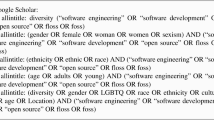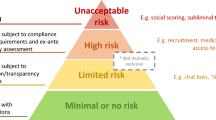Abstract
As one of the UML’s main extension mechanisms, stereotypes play a crucial role in the UML’s ability to serve a wide and growing base of users. However, the precise meaning of stereotypes and their intended mode of use has never been entirely clear and has even generated significant debate among experts. Two basic ways of using UML stereotypes have been observed in practice: One to support the classification of classes as a means of emulating metamodel extensions, the other to support the classification of objects as a means of assigning them certain properties. In this paper we analyze these two recognized stereotype usage scenarios and explain the rationale for explicitly identifying a third form of usage scenario. We propose some notational concepts which could be used to explicitly distinguish the three usage scenarios and provide heuristics as to when each should be used. Finally, we conclude by proposing enhancements to the UML which could support all three forms cleanly and concisely.
Similar content being viewed by others
References
Wirfs-Brock, R., Wilkerson, B., Wiener, L.: Responsibility-driven design: Adding to your conceptual toolkit. ROAD, 1(2): 27–34, July–August 1994
OMG. Unified Modeling Language Specification, Version 1.4, 2000. Version 1.4, OMG document ad00-11-01
Henderson-Sellers, B.: The use of subtypes and stereotypes in the UML model. Journal of Database Management, 13(2): 43–50, 2002
Berner, S., Glinz, M., Joos, S.: A classification of stereotypes for object-oriented modeling languages. In: France, R., Rumpe, B. (eds.) Proceedings of the 22 International Conference on the Unified Modeling Language, LNCS, vol. 1723. Springer Verlag, Berlin, October 1999, pp. 249–264
Fontoura, M., Pree, W., Rumpe, B.: The UML Profile for Framework Architectures. Addison-Wesley, 2002
Conallen, J.: Building Web Applications with UML. Addison-Wesley, Reading, MA, 2000
Atkinson, C., Kühne, T.: Strict profiles: Why and how. In: Evans, A., Kent, S., Selic, B. (eds.) Proceedings of the 3rd International Conference on the UML 2000, York, UK, LNCS, vol. 1939. Springer Verlag, October 2000, pp. 309–323
Atkinson, C., Kühne, T., Henderson-Sellers, B.: To meta or not to meta – that is the question. Journal of Object-Oriented Programming, 13(8): 32–35, December 2000
Selic, B.: Re: Ask about UML. email communication 10:15:56 -0400, September 2001. email to third author and others
Atkinson, C., Kühne, T.: Meta-level independent modeling. In: International Workshop Model Engineering (in Conjunction with ECOOP’2000). Cannes, France, June 2000
Atkinson, C., Kühne, T.: The essence of multilevel metamodeling. In: Gogolla, M., Kobryn, C. (eds.) Proceedings of the 4th International Conference on the UML 2000, Toronto, Canada, LNCS vol. 2185. Springer Verlag, October 2001, pp. 19–33
Leivant, D.: Higher order logic. In: Gabbay, D.M., Hogger, C.J., Robinson, J.A. (eds.) Handbook of Logic in Artificial Intelligence and Logic Programming, vol. 2. Oxford Science Publications, 1994, pp. 229–321
Author information
Authors and Affiliations
Corresponding authors
Rights and permissions
About this article
Cite this article
Atkinson, C., Kühne, T. & Henderson-Sellers, B. Systematic stereotype usage. Softw Syst Model 2, 153–163 (2003). https://doi.org/10.1007/s10270-003-0027-9
Published:
Issue Date:
DOI: https://doi.org/10.1007/s10270-003-0027-9




